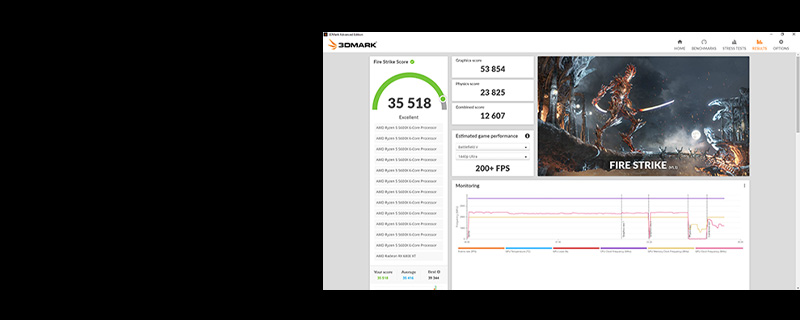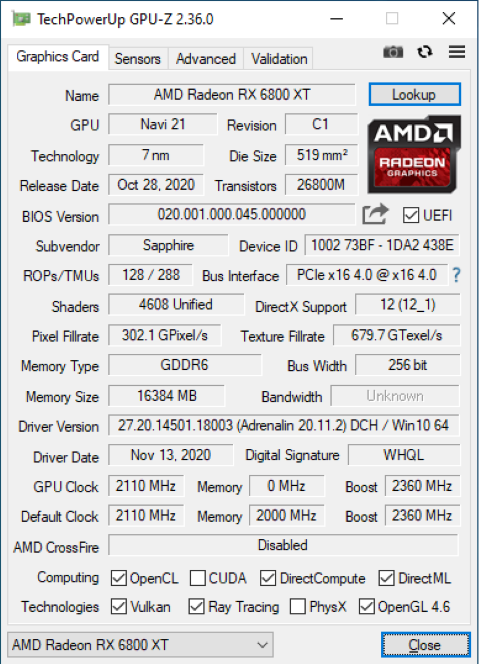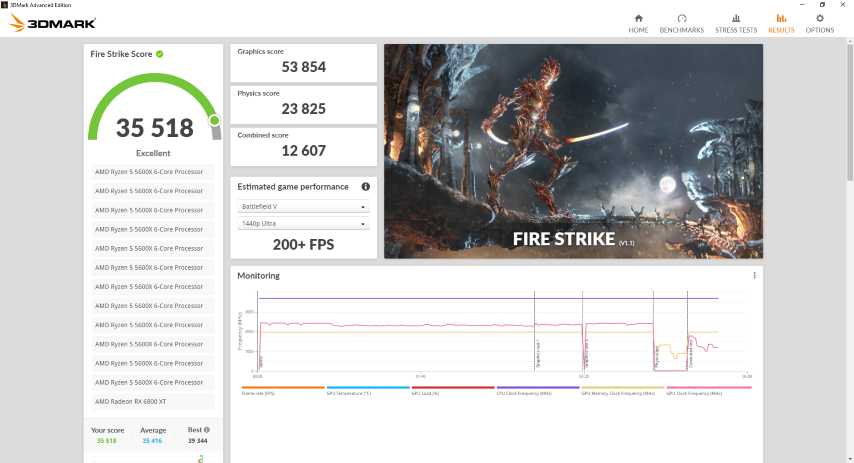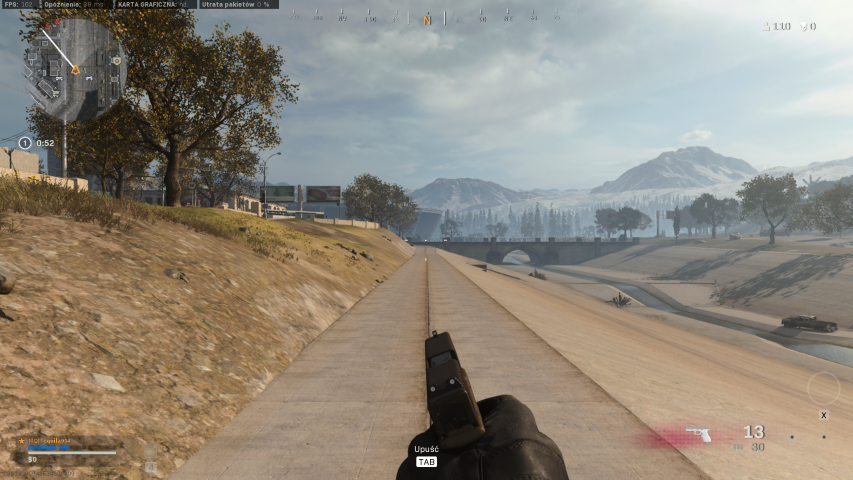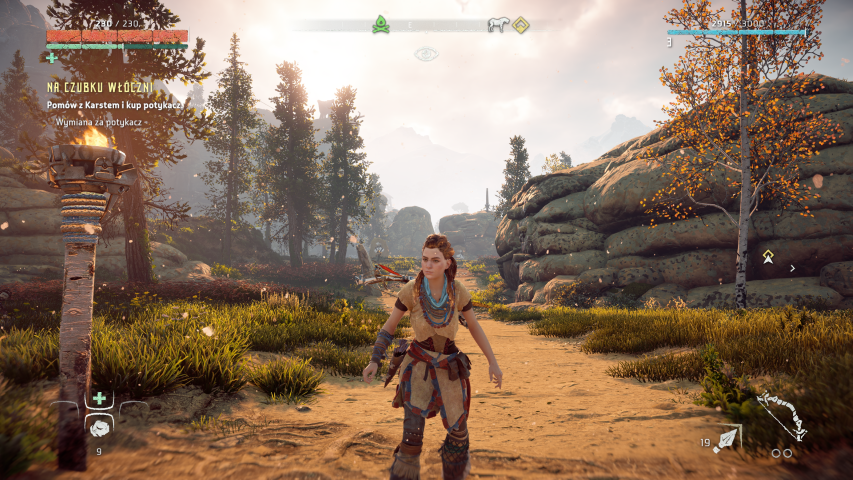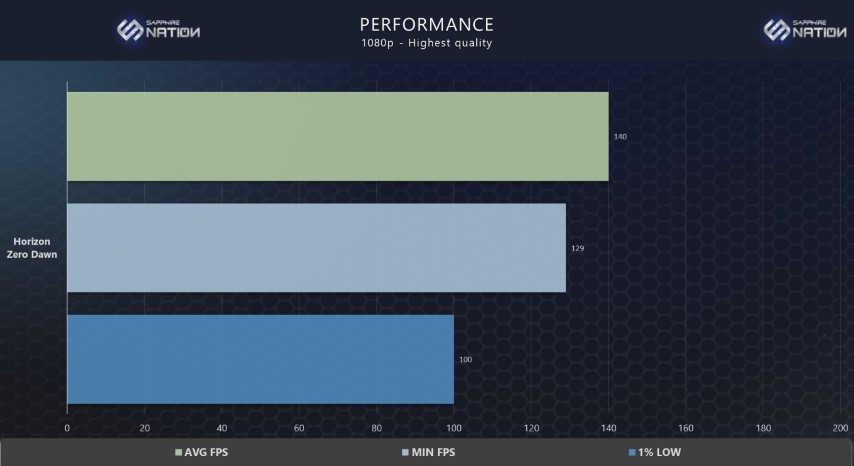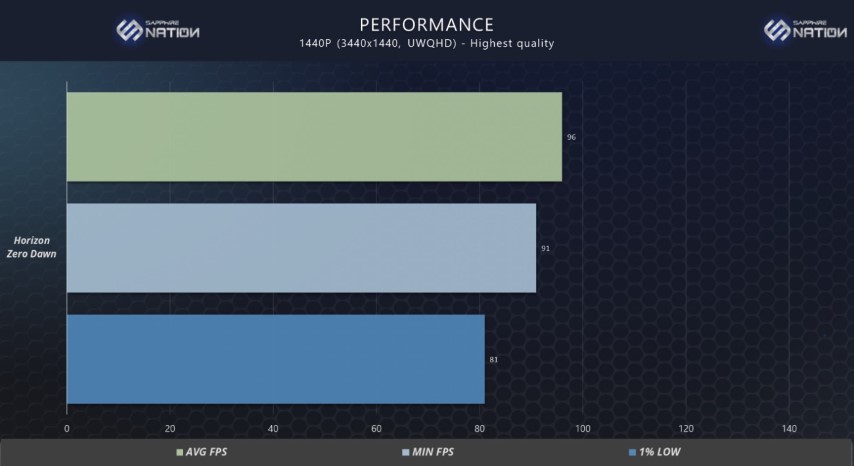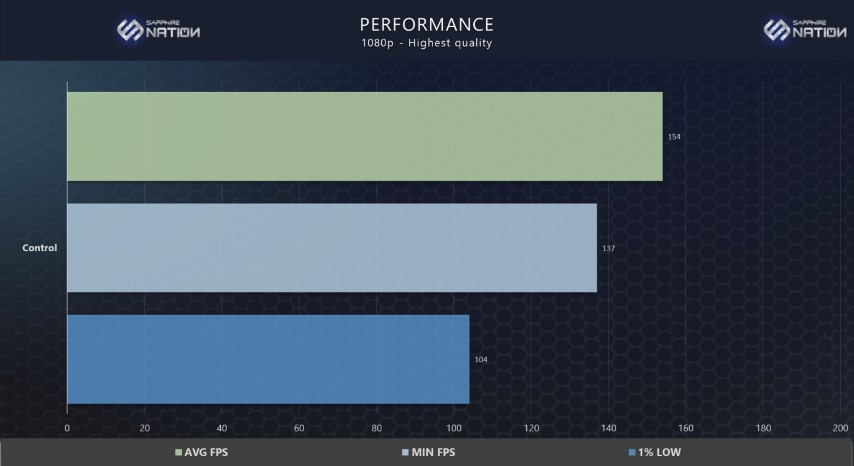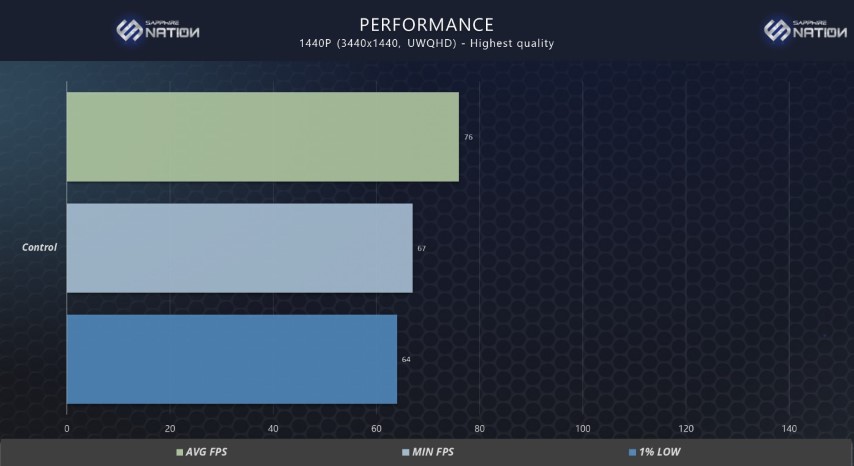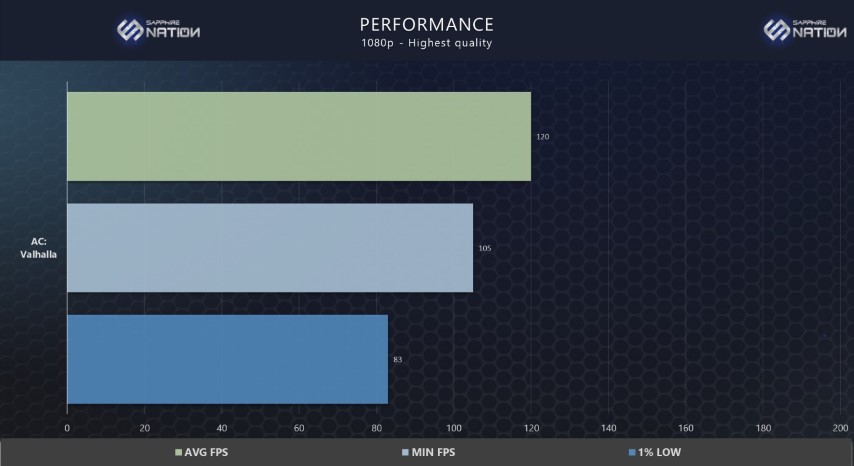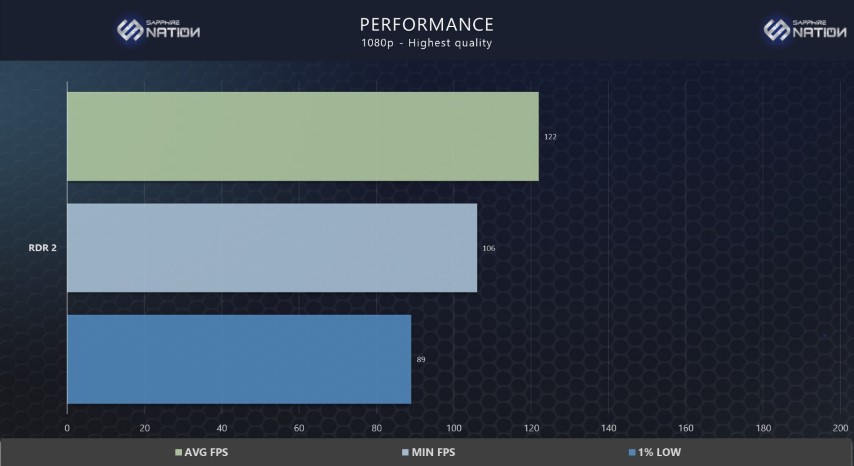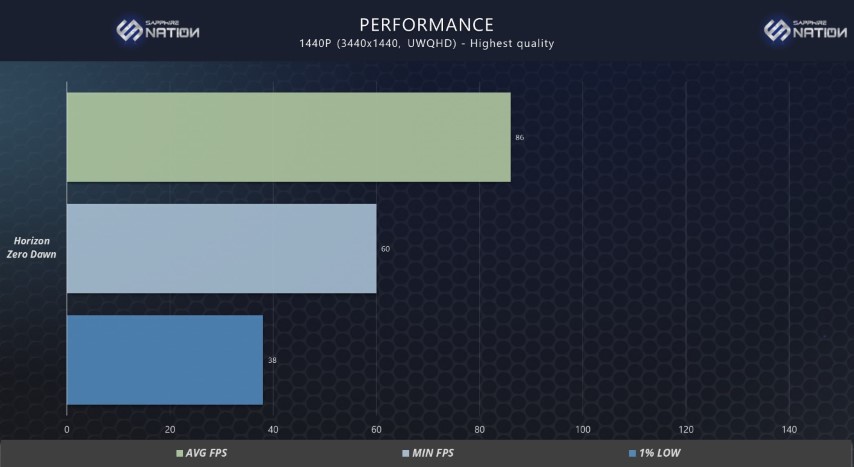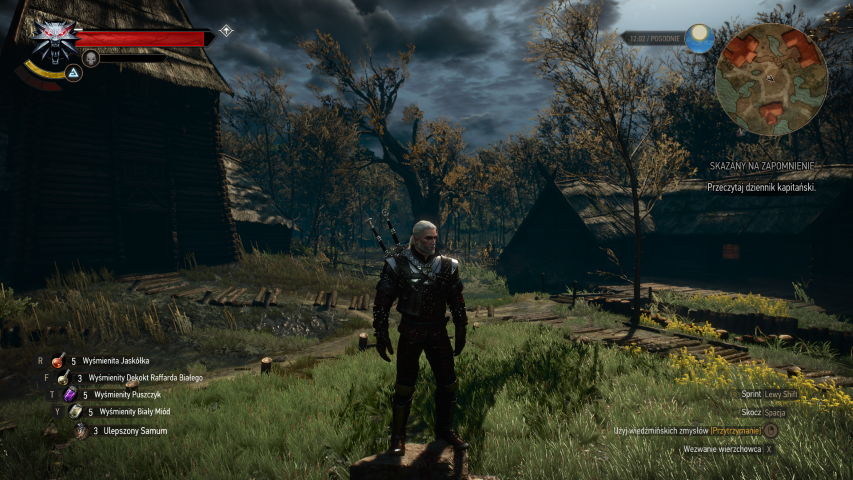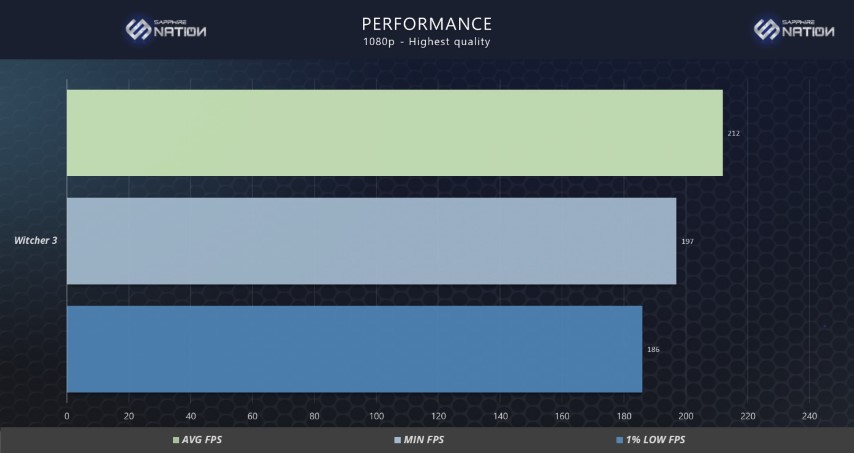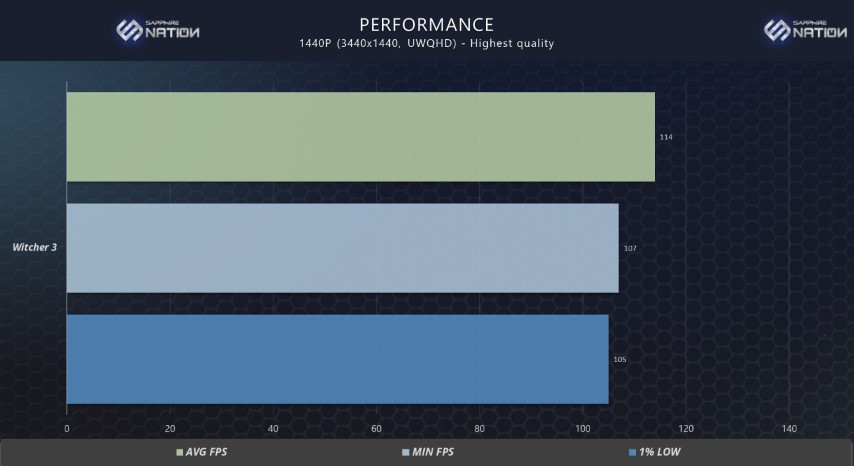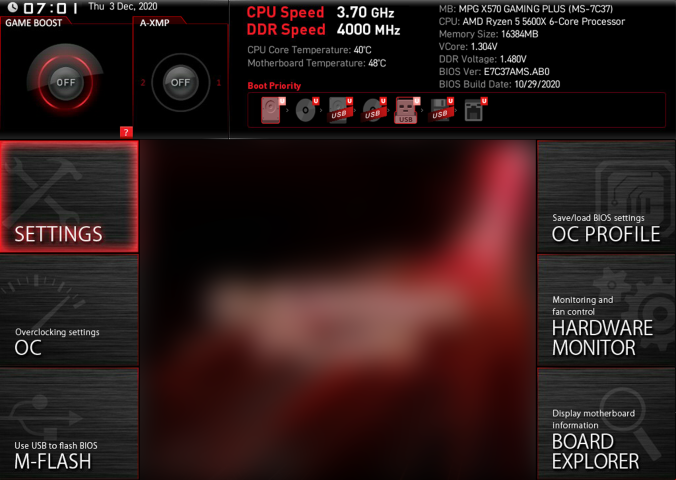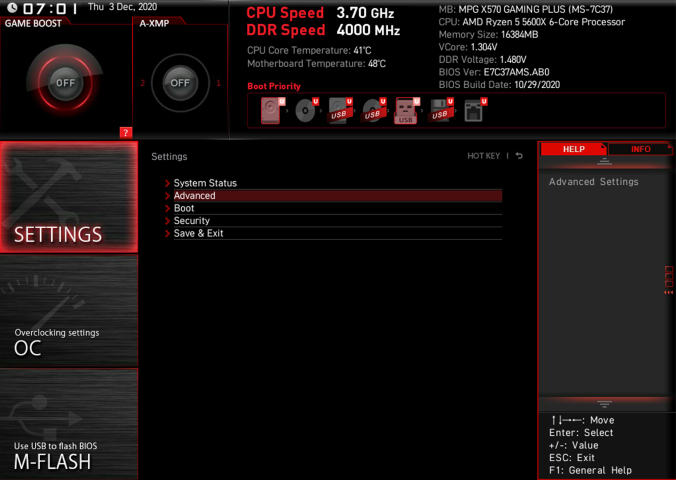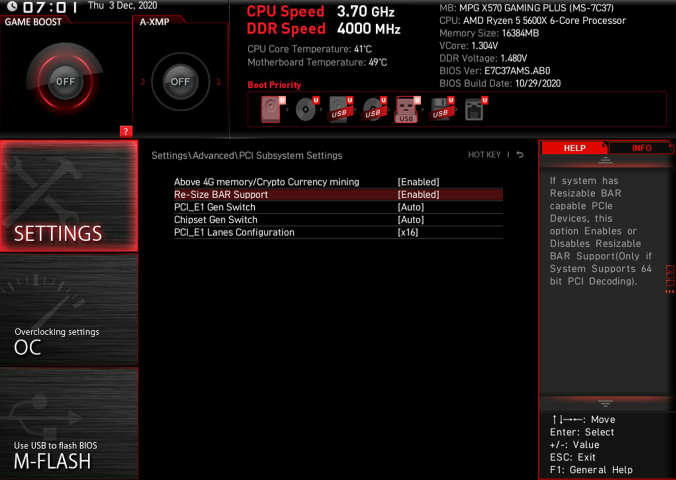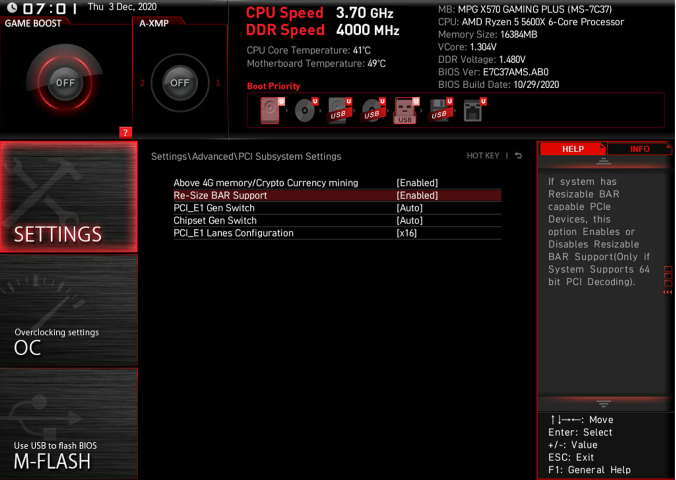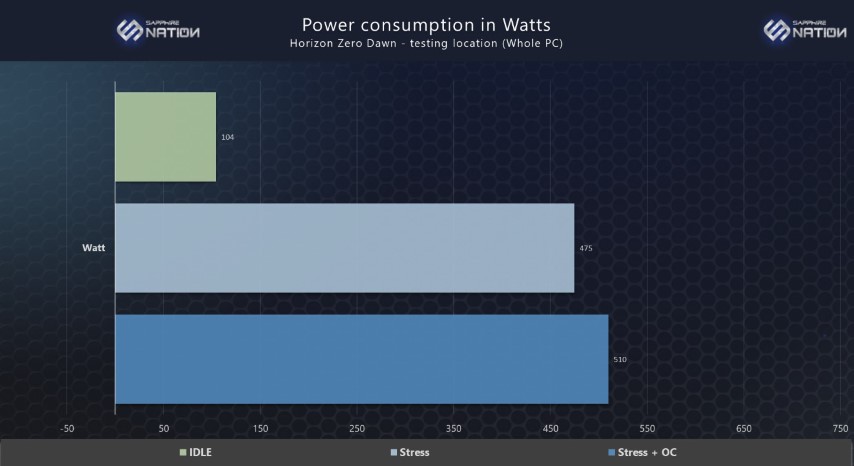
2020 was an exceptional year for AMD. The company brought out its latest generation of Ryzen processors as well as brand-new models of graphics cards. The Radeon RX 6800 and RX 6800 XT further round out last year's very successful product line RX 5000, and flex a whole new level of quality.
The improved RDNA 2 architecture and the innovations it brings show why you would want this hardware playing first fiddle. Foremost among those innovations are Infinity Cache, Ray Accelerators and Smart Access Memory.
Innovations
Infinity Cache grants an additional 128 MB of built-in L3 cache, designed to support GDDR6 video memory by boosting bandwidth, data exchange speed and energy efficiency. It also greatly increases card performance at higher resolutions.
Ray Accelerators are special computing units that handle hardware Ray Tracing. One Ray Accelerator for each Compute Unit (CU) block performs four operations every clock cycle. The Radeon 6800 and 6800 XT are equipped with 60 and 72 of RA units, respectively.
Smart Access Memory (SAM) is an exclusive technology unique to AMD cards. It works when paired up with an AMD 500 (B550 / X570) chipset and a fourth generation AMD Ryzen 5000 series processor. In a nutshell, SAM boosts the performance of the graphics card by a dozen or so percent, translating into better gaming. It achieves that improvement by providing the processor with full access to the card’s memory resources, significantly accelerating the card’s efficiency in the process.
The performance gains SAM offers rely heavily on game developers optimizing the graphics engines their games are running on. Whomever they rely on, however, this technology will have the opportunity to shine as time goes on.
Assuming that AMD plans to work closely with game studios, SAM may prove to be a bargaining chip for people looking for a new graphics card for their Ryzen 5000 series CPU.
New Radeon cards from SAPPHIRE
The SAPPHIRE Brand is valued not only for its unconventional approach to card design, but also the consistent style and form that has defined its products for several generations now. is no exception, and nor does it disappoint. Architecture-wise, the SAPPHIRE looks very similar to the reference version, with a three-fan structure reinforced with an additional backplate. However, that is where the similarities end. SAPPHIRE took pains to ensure their card presents the best possible performance with optimal temperatures and low noise.
The SAPPHIRE NITRO+ AMD RADEON™ RX 6800 XT Special Edition cooling system
The powerful cooling system consists of six copper, nickel-plated heat pipes and corrugated aluminum fins. The whole thing is cooled by three SAPPHIRE Tri-X fans, which generate higher static pressure than the older generation blades – 5.5% more, to be precise. That translates into air flow of 37.13 CFM at a maximum rotation speed of 3600 RPM. Overall, the higher pressure keeps temperatures down while maintaining high device performance.
The cooling system is lined with K6.5 Memory Pads, bringing in 38% better thermal conductivity than the Memory Pads of previous generations.
The SAPPHIRE Quick Connect technology made a return, making it possible to quickly detach fans for cleaning purposes without the danger of voiding the warranty.
The SAPPHIRE NITRO+ Special Edition
This top version of the RX 6800 XT model is not only fitted with all the SAPPHIRE technical innovations, but also looks sharp. The showcase of the SE model is the beautiful, vivid and dynamic ARGB LED lightning, which can be managed with the SAPPHIRE TriXX application.
There are modes and lighting effects enough to enable every user to customize the model to their liking. For example, the colors can be set to change with the card’s temperature. The card's lighting can also be synchronized with the lighting on the motherboard using a dedicated 3-pin header.
Additionally, the SAPPHIRE NITRO+ AMD Radeon™ RX 6800 XT Special Edition offers Dual-BIOS with the ability to switch Boost and Silent modes on the fly. This means that in addition to the two standard operating modes, the card also has a third one, which is used to dynamically change the settings depending on the user’s needs. The user can now choose whether to use the factory BIOS "Boost" (first position), “Silent” (second position) or to define settings in the third position of the slider. Changes can be implemented using dedicated tools like the SAPPHIRE TriXX.
Alongside the 6800 XT model, SAPPHIRE offers a set of video outputs that outshines the non-XT model, and has four ports: 1x HDMI 2.1 VRR, 2x DisplayPort 1.4 with DSC and 1x USB-C DP Alt Mode. The HDMI 2.1 port allows the user to transmit HDR image with 8K resolution (7680 x 4320 px). In addition, the USB-C port operating in DisplayPort Alt-Mode introduced in the Special Edition version should please customers looking to use VR Headsets.
Technical Specifications
The specifications of the SAPPHIRE NITRO+ AMD Radeon™ RX 6800 XT model are as follows: the GPU consists of 4608 stream processors; the core clock’s frequency has been increased over that of the reference model, to 2360 MHz in Boost mode. Interestingly, I recorded values higher than those the manufacturer’s tests indicated, with the clock showing a maximum value of 2468 MHz while in Horizon: Zero Dawn.
72 CU units are responsible for real-time ray tracing; and the graphics card memory can work with a clock of up to 1990 MHz at full load.
The tested card has 16 GB of fast GDDR6 memory supported by a 256-bit bus. The data transfer rate reaches 16 Gbps, which in combination with the additional 128 MB of L3 on-board memory reserved for the Infinity Cache creates an incredibly efficient data exchange buffer.
Packing the 6800 XT with so much VRAM is a clear wink to customers, as more and more users choose to play at high resolutions. The substantial memory buffer also provides protection against the constantly growing requirements of video games, which are becoming more resource-hungry every year. Choosing a graphics card with a lot of memory is currently the best future-proof solution.
Double 8-pin PCI Express connectors are required to power the card. The SAPPHIRE NITRO+ AMD Radeon™ RX 6800 XT has a TDP of 350W, and the recommended power supply should be certified and have a power of 750W, as the card’s power consumption, according to the manufacturer, may reach 335 W.
| SAPPHIRE NITRO+ AMD Radeon™ RX 6800 |
SAPPHIRE NITRO+ AMD Radeon™ RX 6800 XT SAPPHIRE NITRO+ AMD Radeon™ RX 6800 XT |
|
|
Architecture |
RDNA 2.0 |
RDNA 2.0 |
|
Graphic layout |
Navi 21 XL |
Navi 21 XT |
|
Core size |
519 mm2 |
519 mm2 |
|
Lithography |
7 nm |
7 nm |
|
Transistors |
27 mld |
27 mld |
|
System Processors |
3840 |
4608 |
|
TMU units |
240 |
288 |
|
ROP units |
96 |
128 |
|
Ray Accelerators |
60 |
72 |
|
Boost Clock |
2190 MHz |
2360 MHz |
|
Game Clock |
1980 Mhz |
2110 Mhz |
|
Memory clock |
2000 MHz |
2000 MHz |
|
Memory size |
16 GB |
16 GB |
|
Memory bus |
256 bits |
256 bits |
|
Memory bandwidth |
512 GB / s |
512 GB / s |
|
Infinity Cache memory |
128 MB |
128 MB |
Testing Card Specification
Performance tests
To measure the card’s performance, I used five popular video games in singleplayer and multiplayer modes. 3DMark Firestrike and 3DMark Time Spy were used as synthetic benchmarks, while the measuring duties were entrusted to is
commonly used software, including tools from AMD - Adrenaline 2020 Edition and HW Info software. All changes related to raising the GPU clocks settings were made in the card management panel in Adrenalin drivers (version 20.11.2).
To measure FPS, I used test scenarios that assumed the maximum load on the graphics card. They consisted of test locations as well as benchmarks implemented in the games tested. The measurements were repeated twice, and the result included was the higher average FPS number of the two.
Test platform
|
CPU |
AMD Ryzen 5 5600X Stock |
|
Motherboard |
MSI X570 Gaming Plus |
|
RAM |
HyperX Fury RGB 16 GB DDR4 @ 4000 MHz CL 18-22-22-42-1T |
|
SSD |
Kingston A2000 1 TB NVME |
|
PSU |
Corsair RM750750W |
|
Case |
Corsair iCUE 465X RGB White |
|
Monitor 1 |
Iiyama ProLite X2283HS FHD @75Hz |
|
Monitor 2 |
Philips 349X7F UWQHD @100Hz |
|
Operating System |
Microsoft Windows 10 20H2 64-bit |
|
Drivers |
Adrenalin 2020 Edition 20.11.2 Recommended (WHQL) |
All tests in the first approach were performed in Full HD (1920x1080), in the second one were in UWQHD (3440 x 1440 px) resolution with the highest available graphics settings.
Synthetic tests
In synthetic tests, the SAPPHIRE NITRO+ AMD Radeon™ RX 6800 XT Special Edition shows excellent performance on the default settings. The benchmark ranks the new AMD card very high and evaluates the set as appropriate for playing on monitors with a high refresh rate.
FireStrike
3DMark Firestrike is a benchmark that analyzes the performance of the entire PC while handling 3D games and applications, treating all components equally when scoring. Below is the screen cap of the test output:
TimeSpy
TimeSpy focuses on the processing power of graphics cards, to great effect.
Game tests
The first game tested is Call of Duty: Modern Warfare in WARZONE game mode. The test site is downtown near the sewers.
CoD: MW, WARZONE mode
When it comes to game smoothness, the card returned breathtaking results. Visual detail settings set to max quality leave no doubt that the RX 6800 XT should be selected with a 144 Hz monitor. Even in more demanding games this number of frames will be fully used.
During the test run, the card worked at less than 80% of its capacity, clearly indicating that its power reserves were not fully exhausted in tested resolution (FHD – 1920x1080). Meanwhile, the boost clock oscillated around the default value - 2100 MHz on the graphics core and 1800 MHz on VRAM.
Horizon: Zero Dawn
Moving on to a single-player title, where the test environment variability is easier to exclude. We start with Horizon: Zero Dawn. This title demands a great deal of graphics cards, especially with the graphics quality settings maxed out. It’s also one of the few titles to force the GPU to work with the maximum Boost clock. In this case, during the test run the card accelerated up to 2468 MHz, exceeding the clock performance indicated by the manufacturer.
If ever a game were a graphics cards serial killer – sheer volumes of detail and ray traced technology its weapons of choice – Control would have to be it. The first test shows you the results on the maximum graphic detail with ray tracing turned off, while the second graph details FPS levels with full Ray Tracing turned on in the same testing location.
Assassin’s Creed Valhalla
Ubisoft games likes powerful GPUs. Just consider the Assassin's Creed series, famous for its exorbitant hardware requirements. Here too the SAPPHIRE dials in attractive results. In the graphics card market, not even a hulking viking would hold a candle – or a short axe – to the SAPPHIRE NITRO+ AMD Radeon™ RX 6800 XT Special Edition.
Red Dead Redemption 2
RDR2 is a real GPU killer, especially after selecting the maximum level of graphical detail. However, this graphics card plunges into the dangerous world of gunslingers without fear or issues and allows you to tame wild mustangs in over 100 FPS on average. Such a Wild West is worth its weight in gold!
The Witcher 3
The Witcher 3 will probably soon be replaced in benchmarks by Cyberpunk 2077, but for now let's look again at the performance of the RX 6800 XT in this last generation classic.
The performance is phenomenal at both resolutions. The tests were performed in a GPU-stress location.
Smart Access Memory in practice
The above results apply to the standard clocks of the processor and graphics card. However, to present the full potential of the Ryzen 5 5600X & Radeon RX 6800 XT duo, I decided to repeat all the tests with the "boost" in the form of Smart Access Memory.
Direct communication between the processor and the L3 memory of the graphics card can be launched with a few quick steps in the motherboard's BIOS.
Here’s a quick run-through on how to do it:
1. Restart the computer and enter the BIOS (usually with "del" or "F2" key).2. When the main BIOS screen comes up, go to the advanced options. For most boards, this function will be available by clicking the "F6" or "F7" button.
3. Navigate to the settings tab
4. Select advanced options and look for "PCI Subsystems Settings"
5. Next, find an item with a name referring to "Crypto Currency mining" or "Above 4G memory" and enable this option.
6. After enabling it, another function should appear: "Re-Size BAR Support". Enable that as well.
Following the above steps and saving the BIOS settings will launch the Smart Access Memory option.
Keep in mind that SAM will not always boost your performance spectacularly. Often the gains are small, but can nonetheless be felt, particularly by those who use monitors with a lower resolution but high refresh rate.
So if you can get "a free performance boost," by all means do so.
SAPPHIRE NITRO+ AMD Radeon™ RX 6800 XT Special Edition overclocking
I admit that for a factory overclocked graphics card, the further potential of increasing the clocks pleasantly surprised me, even taking into account that the Boost performance settings for BIOS are already more than satisfactory. However, increasing the core clock from 2360 MHz to 2652 MHz, and the memory clock from 2000 MHz to 2100 MHz, yields even more impressive results.
Higher clock values, of course, make for noticeably higher temperatures. Although the card allows for stable operation after overclocking the core and memory clocks, keep a close eye on thermal throttling. In protecting against overheating, it can effectively destroy the extra performance by suddenly lowering the clocks.
Working temperatures
The non-overclocked RX 6800 XT works with standard clock settings and the automatic fan speed control function with a maximum temperature of 73° C. After raising the clocks to 2652 MHz and 2100 MHz, the card can easily exceed temperatures of 80° C. This drives up noise generated by accelerating the fans from 1400 RPM to around 1800 RPM.
On default performance settings, the SAPPHIRE NITRO+ AMD Radeon™ RX 6800 XT Special Edition card generates 40.8 dB of noise in Horizon Zero Dawn at the FPS test site.
Turning up the clocks manually will ratchet up the noise to 43dB
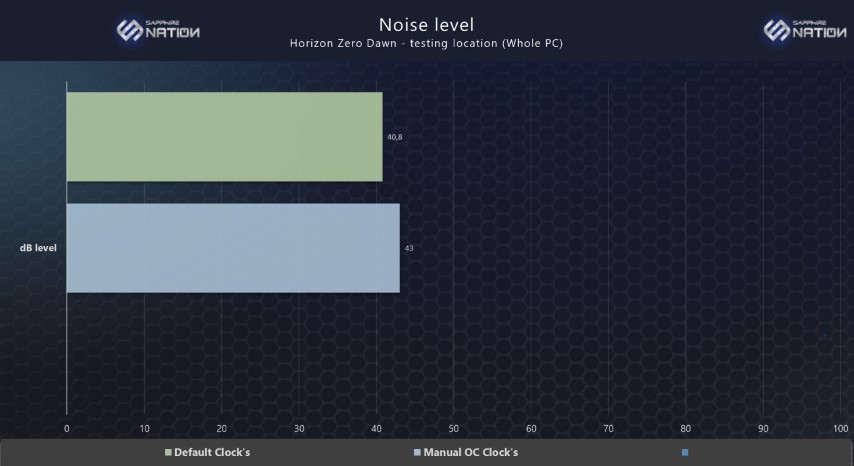
I used the VOLTCRAFT-SL100 measuring tool to perform the test. The measurement was made after 15 minutes of load from a distance of about 30 cm.
Power consumption
At 750W, the recommended power supply for the SAPPHIRE NITRO+ AMD Radeon™ RX 6800 XT Special Edition is 100% justified.
In combination with the Ryzen 5 5600X, which is not overclocked, the card, along with the whole testing platform, takes over 500W in the game Horizon Zero Dawn. CPU consumption in this game rarely exceeds 40%, which suggests that with 100% load on both components, the power consumption will exceed 600W.
Summary
The SAPPHIRE NITRO+ AMD Radeon™ RX 6800 XT Special Edition is an extraordinary card. Visually, it impresses with attention to detail and workmanship, again confirming that SAPPHIRE is synonymous with quality. The cards design is a direct extension of the style that the manufacturer has for years now been known for. Not everyone has to be a fan of LEDs and color illumination, so the "regular edition" of NITRO+ will offer a more classic visual experience. Framed with LED diodes or not, however, SAPPHIRE once again shines among the Radeons from the new "Big NAVI" family.
The most important advantages of the product are great performance and cooling system. Especially the latter should be appreciated for its efficiency and the fan replacement system.
The device become louder after ramping up the factory clocks to even higher values, but that’s something to be expected. You’ll also need to stick to TriXX software for managing the ARGB effects, as it doesn’t support 3rd party applications.
The card has a set of modern image outputs, including a very useful power-delivery USB-C. The possibility of personalizing the BIOS settings profile, including the option of switching between operating modes on the fly, is equally good.
The take-away
The hard work AMD has done on the chip will pay off handsomely. New graphics cards with RDNA 2.0 on board are all competitive players in the graphics card market. The SAPPHIRE brand, however, was able to take a good product and make it even better, making the SAPPHIRE NITRO+ AMD Radeon™ RX 6800 XT one of the most performant, elegant and well-priced graphics cards on the market today.
The articles content, opinions, beliefs and viewpoints expressed in SAPPHIRE NATION are the authors’ own and do not necessarily represent official policy or position of SAPPHIRE Technology.





